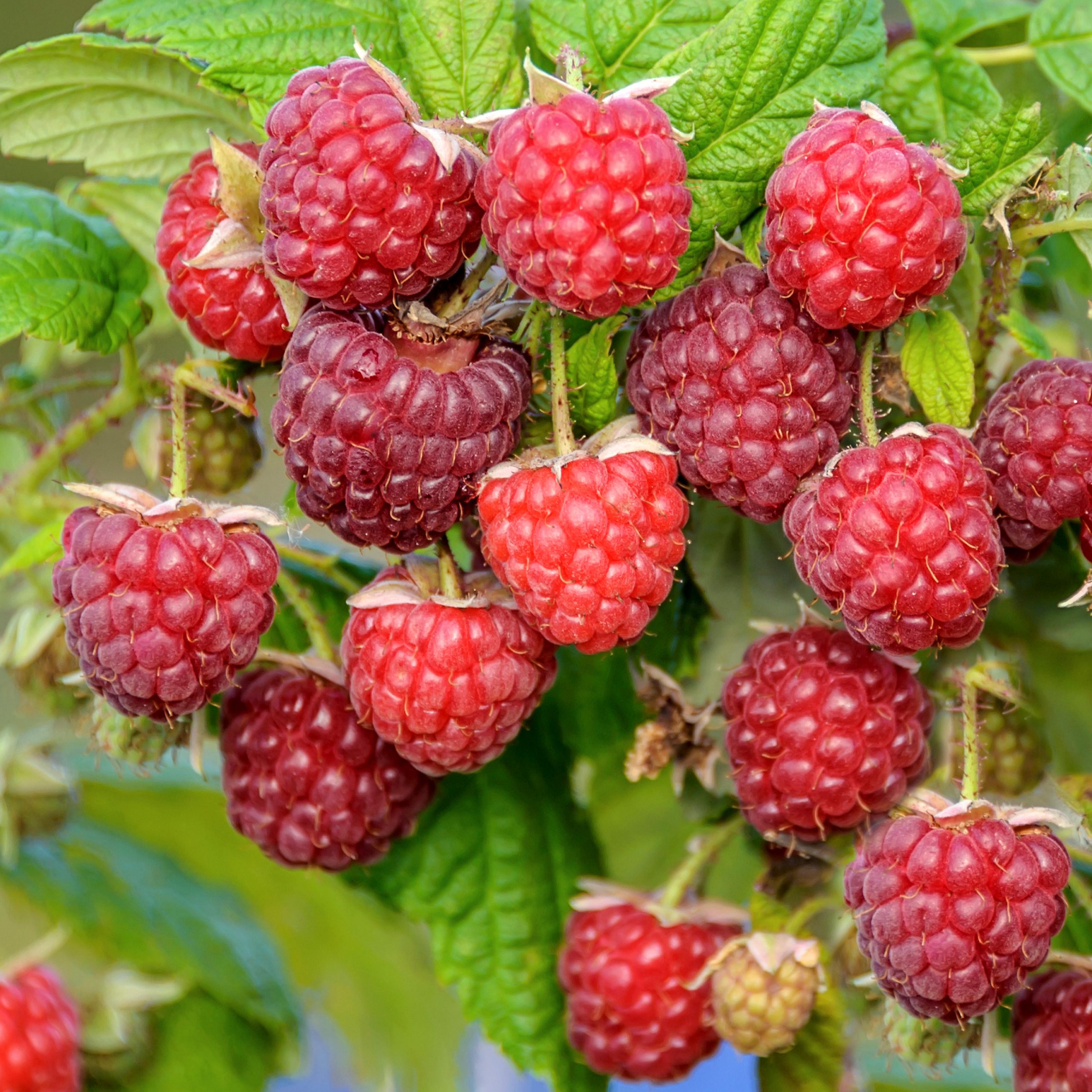Tend to your raspberries now — you'll thank yourself next summer
Pick the right varieties and next year you could be enjoying fresh raspberries for months instead of weeks, explains Mark Diacono.


I find deep satisfaction in plucking a raspberry from the plant. That hollow core reminds me that raspberries are actually clusters of drupelets, rather than berries. Each individual bobble is itself a fruit — a seed within each — with fine threads holding them together as a hollow ‘berry’. In coming away from the core intact, the ‘berry’ will catch plenty of cream in Eton mess or cranachan. These things matter.
A summer of extended heat and little water meant an erratic summer harvest but one that improved as autumn arrived. It seems to be a common experience, if email queries are anything to go by, and has highlighted the need to do the simple things well.
Easy as raspberries are to grow, the distinction between summer- and autumn-fruiting varieties is an important one. As you’d expect, summer raspberries fruit in the hottest weeks of the year, whereas autumn varieties fruit from late August into October and, as they can be equally delicious, your choice of which to grow is largely a matter of timing and management.
The path of least resistance is to grow only autumn raspberries. They fruit on this year’s growth, so, each winter, you prune everything back to ground level, ready for new canes to appear the following growing season. Summer varieties produce fruit on canes that grew last year, so you should prune out only the canes of summer varieties that have fruited — these will have crisp side shoots that once held fruit. The one-year-old canes of summer fruit and the new canes that grow on summer and autumn varieties can either be tied to horizontal wires to stop them bending over or blowing about in the wind or you can let your raspberries grow as a hedge: what you lose in classical formality, you gain in maintenance time saved. For absolute maximum harvest, thin autumn raspberry canes in early summer to 3in or so between each, to avoid overcrowding.
If you have space and inclination, growing both summer and autumn raspberries offers a longer harvest and the chance to insulate yourself against a low harvest caused by an unusual or erratic growing season. Of the summer varieties, any with Glen in their name tend to be delicious and reliable: ‘Glen Moy’ is spineless, too, reducing injuries. ‘Autumn Bliss’ and ‘All Gold’ are my favourite autumn-fruiters; the latter is a yellow variety that tends to attract fewer birds.

Raspberries are tolerant of most soils, except alkaline ones; neutral to slightly acidic, organically rich soils are the ideal. Raspberries are woodland-edge dwellers, which is important to bear in mind: although they need sun to crop heavily, shelter from strong winds is vital, too.
When planting, allow about 20in between plants, with 6ft between rows of summer raspberries and a yard for autumn cultivars. Don’t plant them too deeply, as raspberries are shallow rooting. A friend swears that pruning them when planting to 10in above ground level just above a bud gets them off to the best start. You can grow raspberries in containers, but they tend to yield less and need very regular watering and feeding. Plant no more than three canes in a 1ft-diameter pot.
Exquisite houses, the beauty of Nature, and how to get the most from your life, straight to your inbox.
Raspberries tend to sucker, causing the patch to spread sideways over time; if this is not to your liking, dig up any strays. These can be useful: raspberry plants decline in productivity and health after about a decade, so replace them in instalments after some seven years, using the strays or new plants.
I believe in adding compost to the raspberry bed in spring; the plants expend considerable reserves producing new canes and fruit, so replenishing and enriching the soil helps maintain productivity and retain soil moisture, making plants more resilient to drought.
Raspberries are susceptible to numerous pests and disease, but buying certified virus-free plants from a plant nursery greatly reduces the likelihood of any trouble. Should nuisance strike, the best action is to dig up and incinerate any diseased plants immediately. For no obvious reason, I’ve found birds either line up to decimate my crop or are entirely absent: net the plants if you are troubled.
Raspberries ripen in instalments across the plant. Don’t be in too much of a hurry to pick them: they are usually perfect a couple of days after they look ready, leaving the plant with a pleasing ease. Remove and compost any fruit that has gone over; it encourages more to develop and discourages pests and diseases.
Mark Diacono grows edibles, both usual and unusual, at Otter Farm in Devon (www.otterfarm.co.uk). His latest book is From Scratch: Ferment (Quadrille, £12.99)
Mark is lucky enough to spend most of his time eating, growing, writing and talking about food. He has written fourteen award-winning books, including A Year at Otter Farm and A Taste of the Unexpected (both won Food Book of the Year, and Garden Book of the Year). Known for growing everything from Szechuan pepper to pecans to Asian pears, Mark's refreshing approach to growing and eating has done much to inspire a new generation to grow some of what they eat. He was involved in the early days of River Cottage, appearing in the TV series, and writing four River Cottage books. Mark writes to a global audience on his best-selling Substack: Mark Diacono’s Abundance.
